ORTHODONTIC OR BRACE
What is Brace?
Dental braces are devices that are placed directly on teeth in order to move them. Right now braces are the most common method for achieving optimally aligned teeth. Aside from straightening teeth, braces are used to improve the relationship of how our teeth come together between the upper and lower jaws. Braces for tooth movement fall under the dental specialty of “orthodontics” which is the study and treatment of improper bites (malocclusion). Orthodontic treatment with braces is used for cosmetic as well as functional improvement in respect to teeth position.
WHO IS A GOOD CANDIDATE FOR BRACES?
Braces can be for any age group, but there are optimal times to begin treatment. These days, it is recommended that children have an orthodontic evaluation at the age of 7 to determine if early intervention is needed or advantageous. If recommended, early intervention optimizes results by taking advantage of a child’s skeletal bone growth and may require two-phase orthodontic treatment.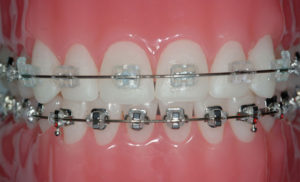
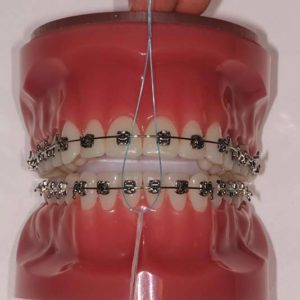
If the window of time for two-phase orthodontic treatment has already passed, results can still be achieved with only one phase of treatment. However, if there is significant crowding of teeth, dental extractions may be required to create room for teeth to move into alignment. Another method for creating room for teeth movement is called “interproximal reduction” (IPR). IPR involves minimal removal of tooth structure on the sides of the teeth to create more room. This method is limited to mild teeth crowding.
Essentially, anyone who desires to have straighter teeth or improve their bite may be a good candidate for braces. A thorough evaluation with a qualified clinician is very important in determining whether one is a good candidate for braces.
DENTAL IMPLANT
Dental Implant
Dental implants are the standard of care for replacing missing teeth and provide a fixed solution to removable dentures. Dental implants are natural-looking replacement teeth that are fixed in the jaw. To receive implants, you need to have healthy gums and adequate bone to support the implant. You must also commit to keeping these structures healthy. Maintain good oral hygiene and regular dental visits are critical to the long-term success of dental implants.
PROSTHODONTIC
DENTAL CROWN
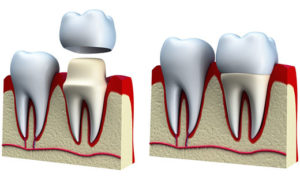 When a tooth has a large filling, it may require a Dental crown for strength and stability. Root canal therapy can save a natural tooth from extraction; however, the process can lead to a brittle tooth as time goes by. A dental crown protects the tooth from any further damage. A dental crown is a cap that fits over the prepared tooth and cemented in place. Crowns can be made from resins, metal alloys or porcelain fused to metal. Porcelain and resin crowns are made to look and feel like your natural tooth. Crowns are commonly used to cover or cap a damaged tooth or an implant. Your dentist may recommend a crown to:
When a tooth has a large filling, it may require a Dental crown for strength and stability. Root canal therapy can save a natural tooth from extraction; however, the process can lead to a brittle tooth as time goes by. A dental crown protects the tooth from any further damage. A dental crown is a cap that fits over the prepared tooth and cemented in place. Crowns can be made from resins, metal alloys or porcelain fused to metal. Porcelain and resin crowns are made to look and feel like your natural tooth. Crowns are commonly used to cover or cap a damaged tooth or an implant. Your dentist may recommend a crown to:
- Restore a large filling when there isnt insufficient tooth.
- Protect a weak tooth from fracturing
- Restore a fractured tooth
- Attach a bridge
- Cover a dental implant
- Cover a discolored or poorly shaped tooth
- Cap a tooth that had root canal treatment
DENTURE
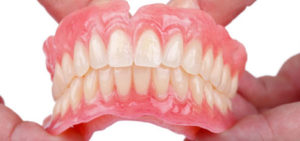
We offer full and partial DENTURES to improve your quality of life. These are removable dental prosthetics that replace missing teeth. Partial dentures are only used when very few teeth are missing. When missing teeth create a space that is not conducive to bridgework, and implants are not advised, a partial denture is the next best option. Full dentures are used when all the teeth in the upper or lower arch are missing. They are fabricated to look like your natural teeth and fit on your gums.
TEETH CLEANING & GUM TREATMENT
TEETH CLEANING & GUM TREATMENT
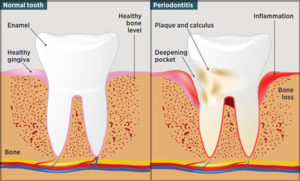
Root planning is similar to scaling and polishing in the sense that your dentist will also remove plaque and tartar from your gums. However, in root planning, your dentist will have to go UNDER the gum line (usually with local anaesthesia) to remove the plaque and tartar that have accumulated in the gum pockets associated with Periodontitis.
Periodontitis occurs when bacterial plaque, a sticky white film composed of food debris and bacteria forms on the teeth. If the plaque is not removed, it can turn into a hard substance called calculus or tartar in less than two days. Tartar then acts as a further bacteria trap due to its rough surface. The bacteria in plaque infect the gums, and release toxins that cause redness and irritation. It can cause the bone surrounding the teeth to dissolve. When this happens, the gums separate from the teeth, forming pockets that fill with even more plaque causing even more infection. A vicious cycle now ensues. And it leads to shaky teeth and bad breath from the build up of bacteria in the gums.
ROOT CANAL TREATMENT
ROOT CANAL TREATMENT
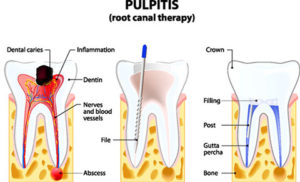
Root canal treatment is designed to eliminate bacteria from the infected root canal, prevent reinfection of the tooth and save the natural tooth. When one undergoes a root canal, the inflamed or infected pulp is removed and the inside of the tooth is carefully cleaned and disinfected, then filled and sealed.
HOW DO YOU KNOW IF YOU NEED A ROOT CANAL?
Root canals are needed for a cracked tooth from injury or genetics, a deep cavity, or issues from a previous filling. Patients generally need a root canal when they notice their teeth are sensitive, particularly to hot and cold sensations.
There are a few symptoms that mean you might need a root canal—
- Severe pain while chewing or biting
- Pimples on the gums
- A chipped or cracked tooth
- Lingering sensitivity to hot or cold, even after the sensation has been removed
- Swollen or tender gums
- Deep decay or darkening of the gums
WISDOM TEETH REMOVAL
ROOT CANAL TREATMENT
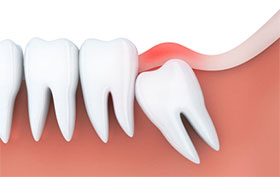
Wisdom teeth are the third and final set of molars that most people get in their late teens or early twenties. Sometimes these teeth can be a valuable asset to the mouth when healthy and properly aligned, but more often, they are misaligned and require removal.
When wisdom teeth are misaligned, they may position themselves horizontally, be angled toward or away from the second molars, or be angled inward or outward. Poor alignment of wisdom teeth can crowd or damage adjacent teeth, the jawbone, or nerves.
Wisdom teeth also can be impacted they are enclosed within the soft tissue and/or the jawbone or only partially break through or erupt through the gum. Partial eruption of the wisdom teeth allows an opening for bacteria to enter around the tooth and cause an infection, which results in pain, swelling, jaw stiffness, and general illness. Partially erupted teeth are also more prone to tooth decay and gum disease because their hard-to-reach location and awkward positioning makes brushing and flossing difficult.




